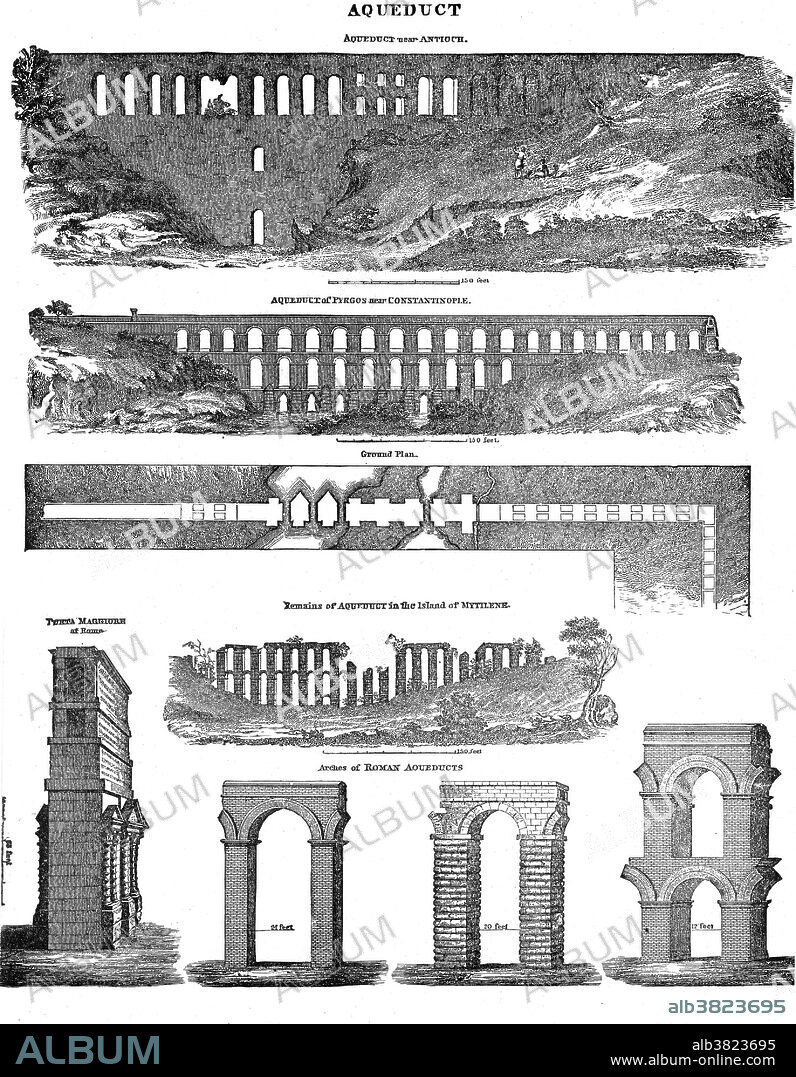alb3823695
Roman aqueducts

|
Add to another lightbox |
|
Add to another lightbox |



Buy this image.
Select the use:

Title:
Roman aqueducts
Caption:
The Romans constructed numerous aqueducts to bring water from distant sources into their cities and towns, supplying public baths, latrines, fountains and private households. Waste water was removed by complex sewage systems and released into nearby bodies of water, keeping the towns clean and free from effluent. Some aqueducts also provided water for mining operations and the milling of grain. Aqueducts moved water through gravity alone, being constructed along a slight downward gradient within conduits of stone, brick or concrete. Where valleys or lowlands intervened, the conduit was carried on bridgework, or its contents fed into high-pressure lead, ceramic or stone pipes and siphoned across. Most Roman aqueducts proved reliable, and durable; some were maintained into the early modern era, and a few are still partly in use.
Category:
ILLUSTRATION • black & white • History: Ancient
Credit:
Album / Science Source / New York Public Library
Releases:
Image size:
3300 x 4246 px | 40.1 MB
Print size:
27.9 x 35.9 cm | 11.0 x 14.2 in (300 dpi)
Keywords:
ANCIENT CIVILIZATION • ANCIENT CULTURE • ANTIQUITY • AQUAEDUCT • AQUEDUCT • ARCH • ARCHES • ARCHITECTURAL • ARCHITECTURE • ART • ARTWORK • BLACK & WHITE • BRIDGE • BW • CIVIL ENGINEERING • DESIGN • DRAWING • ENGINEERING • HISTORIC • HISTORICAL • HISTORY • HISTORY: ANCIENT • ILLUSTRATION • ILLUSTRATIONS • ILUSTRATION • MOVED WATER • ROMAN AQUEDUCT • ROMAN EMPIRE • ROMAN • WATER CHANNEL • WATER CONDUIT • WATER COURSE • WATER DISTRIBUTION • WATER FLOW • WATER PASSAGE • WATER SYSTEM • WATERWORKS
 Pinterest
Pinterest Twitter
Twitter Facebook
Facebook Copy link
Copy link Email
Email
